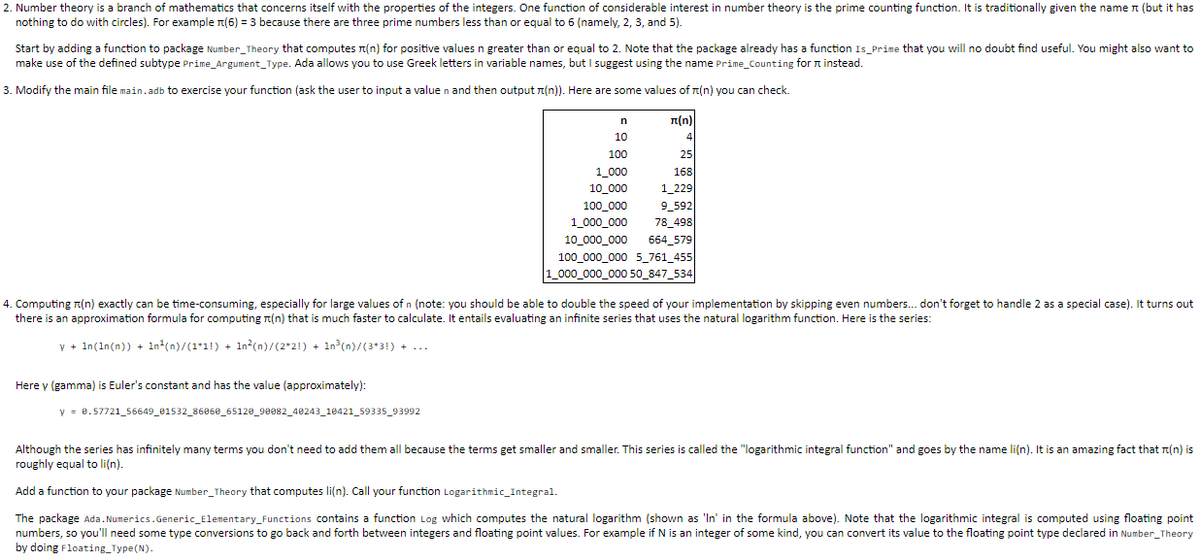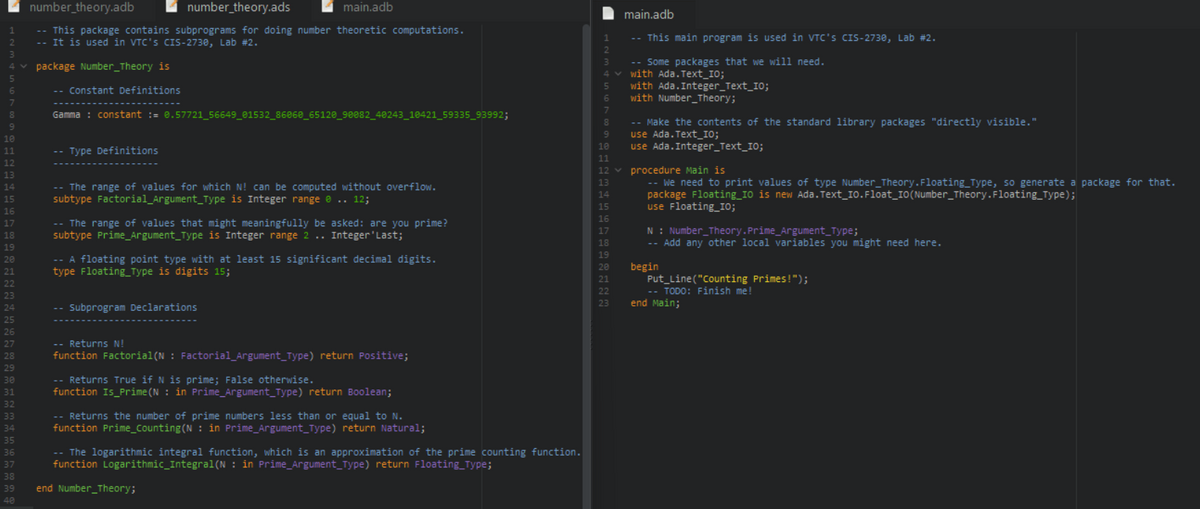This code is in ada Please type your solution out in working code don't just give me an example they may just confuse me more The code can be done in C Below is Number_Theory.adb with Ada.Numerics.Generic_Elementary_Functions; package body Number_Theory is -- Instantiate the library for floating point math using Floating_Type. package Floating_Functions is new Ada.Numerics.Generic_Elementary_Functions(Floating_Type); use Floating_Functions; function Factorial(N : in Factorial_Argument_Type) return Positive is begin -- TODO: Finish me! -- -- 0! is 1 -- N! is N * (N-1) * (N-2) * ... * 1 return 1; end Factorial;
This code is in ada
Please type your solution out in working code don't just give me an example they may just confuse me more
The code can be done in C
Below is Number_Theory.adb
with Ada.Numerics.Generic_Elementary_Functions;
package body Number_Theory is
-- Instantiate the library for floating point math using Floating_Type.
package Floating_Functions is new Ada.Numerics.Generic_Elementary_Functions(Floating_Type);
use Floating_Functions;
function Factorial(N : in Factorial_Argument_Type) return Positive is
begin
-- TODO: Finish me!
--
-- 0! is 1
-- N! is N * (N-1) * (N-2) * ... * 1
return 1;
end Factorial;
function Is_Prime(N : in Prime_Argument_Type) return Boolean is
Upper_Bound : Prime_Argument_Type;
Current_Divisor : Prime_Argument_Type;
begin
-- Handle 2 as a special case.
if N = 2 then
return True;
end if;
Upper_Bound := N - 1;
Current_Divisor := 2;
while Current_Divisor < Upper_Bound loop
if N rem Current_Divisor = 0 then
return False;
end if;
Upper_Bound := N / Current_Divisor;
end loop;
return True;
end Is_Prime;
function Prime_Counting(N : in Prime_Argument_Type) return Natural is
begin
-- TODO: Finish me!
--
-- See the lab page for more information.
return 0;
end Prime_Counting;
function Logarithmic_Integral(N : in Prime_Argument_Type) return Floating_Type is
begin
-- TODO: Finish me!
--
-- See the lab page for more information.
return 1.0;
end Logarithmic_Integral;
end Number_Theory;


Step by step
Solved in 3 steps with 1 images









